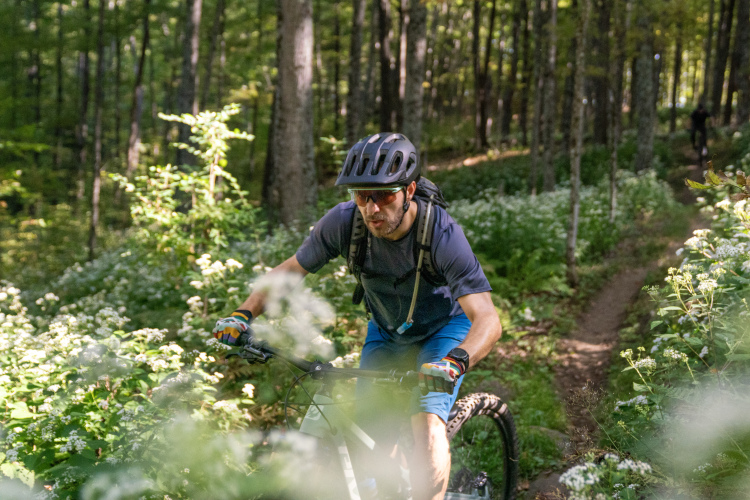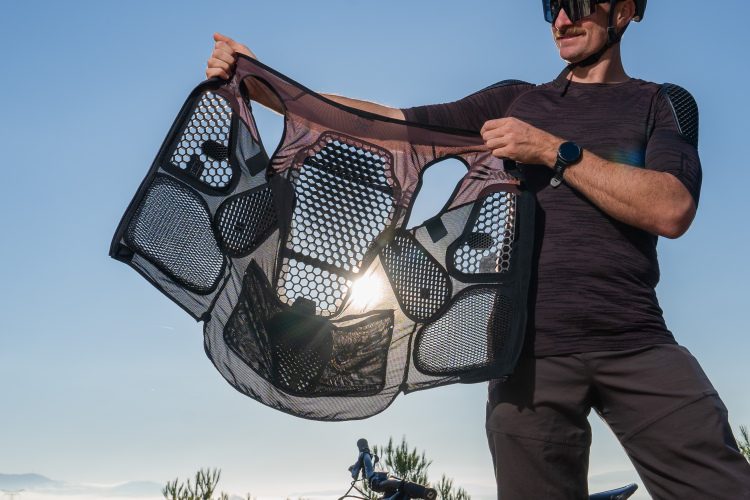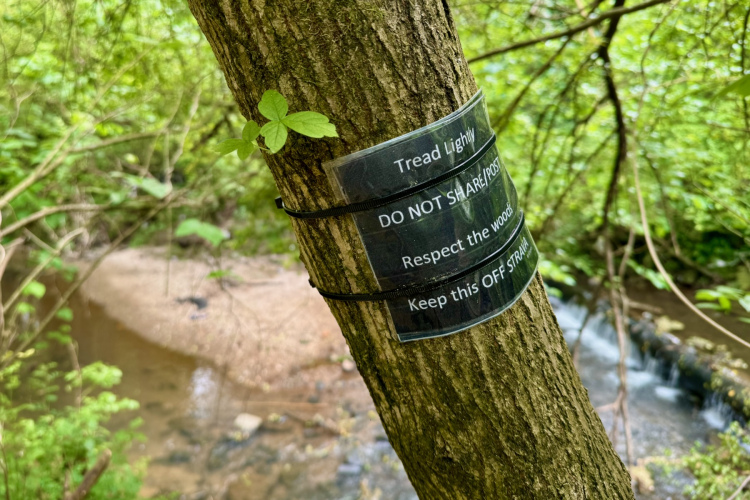People frequently come to the Singletracks forums looking for guidance on mountain bike fork upgrades.
Will it fit my bike? Tapered headset? How much travel? Disc or V-brake compatible? QR, 15mm, 20mm thru-axle? How much should I spend? What brand? What on earth is a Terralogic?
These are all variables that can come up when selecting a replacement fork and this guide will attempt to make sense of it all.
The 10 Most Popular MTB Forks for 2016 (Plus 3 that Aren’t Fox or RockShox)
 Starting with what will fit on your bike is a great way to quickly narrow down the field. Here are several key measurements to consider.
Starting with what will fit on your bike is a great way to quickly narrow down the field. Here are several key measurements to consider.
Headset: there are basically three headsets commonly found on mountain bikes. Older bike models have what’s call a threaded headset with a ‘quill‘ type stem. A bike this old is not a good candidate for a fork upgrade, and a new bike would be a better investment. Among modern threadless headsets, there is the more common 1 1/8″ model, and the newer 1 1/2″ to 1 1/8″ tapered version. If you have a standard 1 1/8″ you cannot use a fork with a tapered steerer. If you have a tapered headset, you can use a fork with a standard steerer, via an adapter, but you will lose the extra stiffness for which the tapered setup was created.
Steerer length:Different bikes have different head tube lengths. If you get a fork that has had the steerer tube cut too short for your head tube, you are screwed. You can measure the outside length of your head tube as a shopping guide, or remove your current fork for a precise measurement. It’s ok to get one with a longer or even uncut steerer, as it is pretty easy to get it cut down to the right length.
Travel: Many people consider a fork upgrade because they want to increase their front travel. This is a very good idea, within reason. Bikes are designed with an overall geometry that takes the fork length and travel into account. Going too tall, say from 80mm to 140mm, will result in a bike that wanders while climbing, corners poorly, and just feels wrong overall. A good rule of thumb is to stick within 20-25 millimeters of what your bike came with. For example, I upgraded my Specialized Rockhopper from a stock 80mm fork to a 100mm replacement. I also upgraded my Giant Trance from 100mm to 120mm. In both cases the bikes continued to handle as designed, and I got the extra travel I wanted for my riding style. Whatever you do, just make sure it doesn’t end up looking like this:
Now that you’re looking at a bunch of forks that will fit your steed, it’s time to think about options.
Coil or Air: Once you get out of the entry level stuff, most modern forks are either coil sprung or have air chambers that act as a spring. Coils springs compress with a linear response, which makes them ideal for extremely long travel downhill forks. On the downside, coil forks are typically heavier, and they are more difficult to tune for individual rider weight. Air springs are generally lighter, and they are easily adjusted for different rider weights by changing the air pressure. But unlike a coil spring, air does not exhibit linear compression. When air is compressed, the spring rate increases and the fork essentially feels stiffer. A LOT of research and design has gone intomitigatingthis effect and modern air forks deal with it pretty well.
Rebound, Lockout, Compression, and Travel Adjustment:Rebound is an adjustment of how quickly the fork returns after it has been compressed. Rebound that is too fast can make the fork feel bouncy and harsh. If it is too slow, repeated bumps will make the fork “pack down” and eventually bottom out altogether. Adjustable rebound is a must-have feature.
A lockout adjustment allows the suspension fork to be set to a nearly rigid setting. This can be handy for long fireroad or paved sections. The adjuster for this is typically on the top of the fork leg or attached to a remote on the handlebars. This is also a pretty basic feature and if you’re upgrading, you should look for it (I have a remote lockout and I love it).
Forks that have a compression adjustment allow you to set a different spring rate for slow speed vs. high speed bumps. It can be a pain to get dialed in, but it makes for the ultimate in smooth riding when set up properly.
On some high end models the travel amount can be quickly changed with an externaladjuster. This can help create the ultimate do-it-all bike by allowing you to drop the travel for XC and climbing, bring it up a bit for all day riding, or max it out for sustained downhill. This feature is awesome, but it comes with a high price tag.
Brakes:If you have, or intend to get, disc brakes, your new fork must have tabs for mounting the caliper. If you have and want to keep your V-brakes, you will need the posts for attaching those. For a while now forks have been shipping with both, but lately many models have dropped the V-brake posts altogether and are disc only.
WheelCompatibility:This is fairly straightforward, but does bear keeping in mind while fork shopping. If you plan to keep your front wheel, make sure to get a fork with the matching axle configuration. If you’re upgrading the wheels and fork together, just pay attention to the specs of each.
Cost:A lot of research has gone into modern suspension forks, and it is reflected in the prices. It’s not hard to drop around $1,000 on a decent fork with the options mentioned above. If that is out of your price range, take a look at what you really need for options and then focus on the middle of the product lines from the major brands. A decent fork with air springs, rebound and lockout can be had in the $250 – $500 price range. These will be a bit heavier, and won’t have the coolest features like low-speed compression adjustment, remote lockout or adjustable travel, but they will work well and hopefully make a nice upgrade over the original you’re replacing. Another trick is to look on eBay or even at your LBS for a “new take-off” model. This is essentially a brand new fork that for whatever reason was swapped off of a new bike when the buyer took delivery. For example, my Fox F32 120 RL Remote retailed for about $900, but I got it as a new take-off for $300 from a bike shop!
 Major Brands:Suspension forkmanufacturers have come and gone over the years. The major brands these days are Fox, Rockshox, Marzocchi, Manitou and Magura. Fox and Rockshox own most of the market due to the innovation of their designs and their build quality. Marzocchi builds excellent long travel models for downhill and freeride, but lately their low end models tend to be, well, low end. They also have a somewhat confusing model line-up where the same model name can have wildly different features and pricing. Manitou revamped their product line several years ago in order to simplify the available choices and incorporate updated designs and materials. They still don’t have the market share of Fox or Rockshox, but they’re a respectable brand that’s worth checking out. Magura manufactures XC, racing, and all mountain forks and is somewhat of a niche brand. They are well regarded among those who own them, and you can occasionally score a really good deal on a used one due to lack of brand recognition.
Major Brands:Suspension forkmanufacturers have come and gone over the years. The major brands these days are Fox, Rockshox, Marzocchi, Manitou and Magura. Fox and Rockshox own most of the market due to the innovation of their designs and their build quality. Marzocchi builds excellent long travel models for downhill and freeride, but lately their low end models tend to be, well, low end. They also have a somewhat confusing model line-up where the same model name can have wildly different features and pricing. Manitou revamped their product line several years ago in order to simplify the available choices and incorporate updated designs and materials. They still don’t have the market share of Fox or Rockshox, but they’re a respectable brand that’s worth checking out. Magura manufactures XC, racing, and all mountain forks and is somewhat of a niche brand. They are well regarded among those who own them, and you can occasionally score a really good deal on a used one due to lack of brand recognition.
Terralogic:This is a suspension design originally developed jointly by Fox and Specialized that uses a special valve to detect what the trail surface is like and automatically lock out or open up as needed. Dgaddis recently tested one and you can read more about it here.
Hopefully this has given you some solid guidelines to help you decide what you need in an upgraded fork so you can zero in on the one that has the features you want at a price that fits your budget. Happy shopping!
[see_also id=”195283″][/see_also]










11 Comments
Aug 24, 2011
Nov 30, 2012
Aug 23, 2011
Aug 23, 2011
@Trek7k - Lotsa very happy Lefty owners out there. They're very, very, very stiff laterally and fore/aft, very light, and very expensive. They use a special headtube only found on Cannondale's....or, there's a company that makes a conversion kit of some sort to let you run one on almost any bike. Of course custom builders can build you something with the special headtube too.
Quick note on Terralogic - first, I didn't know Specialized help develope it, that's interesting. On their current Brain shock equiped bikes they have a Fox built rear shock, but a RockShox fork w/the Brain damper. The good news: you can get a "Brain Transplant" on many RockShox forks! So if you want Terralogic like performance, but already own a RockShox fork, head to your local Specialized dealer and check into the Brain Transplant. I have no idea what it costs...
Aug 23, 2011
Proprietary... don't get me started... try finding a good deal on a GF G2 compatible fork, impossible.
I did take a look at the Manitou Tower for my SS 29er. It is a 48mm offset compared to the 51mm G2 offset. For those that know, would that be a good replacement for the Suntour that came on my Marlin? The geometry seems to be the closest match I can find at a reasonable price point. I really don't want to spend more for a fork than I did on the bike.
Thanks!
Aug 23, 2011
Aug 25, 2011
Aug 23, 2011
The idea is the design saves weight but still offers the same performance (?) as a regular fork. I can't comment on the performance side myself since I've never ridden one for more than a few minutes - anyone care to comment?
Aug 24, 2011
Aug 23, 2011
Aug 23, 2011
Have a look at fork offset and trail.